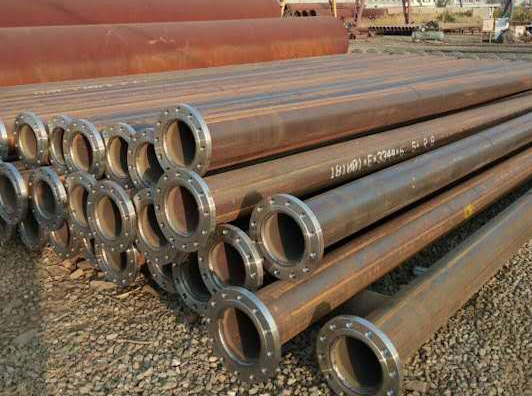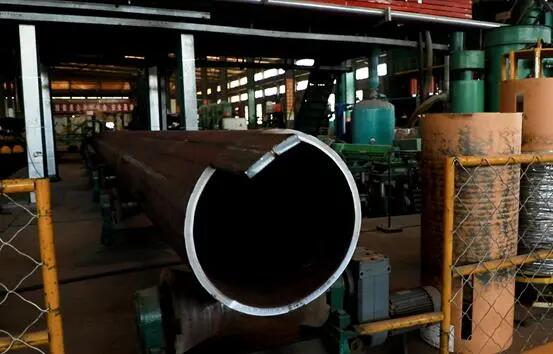
Application of Straight Seam Welded Pipe in Bridge Field
In bridge construction, large-diameter straight seam welded steel pipes are mainly used as support structures to provide stable and reliable support strength. Steel pipes are required as reinforcement and support materials for key parts such as bridge pile foundations, main beams, and bridge decks. The strength and stability of steel pipes ensure that the bridge can withstand various natural disasters and other external pressures during its service life.

In building structures, straight seam welded steel pipes are widely used in columns, beams, reinforced concrete structures and steel structures of buildings due to their strong ability to withstand loads. At the same time, steel pipes are also used in the manufacture of secondary structures such as building railings, door and window frames, and brackets.
How are straight seam welded pipes produced?
1. Steel plate testing: Before processing steel plates, all steel plates need to be ultrasonic tested to check the quality of welded pipes from the source and prevent unqualified steel plates from entering the production line.
2. Blanking: Mill the edges on both sides of the steel plate through an edge milling machine. Achieve the required groove shape, steel plate width and plate edge parallelism as required.
3. Pre-bending: In order to make the steel plate meet the curvature requirements, a pre-bending machine will be used to pre-bend the edge of the plate, or a press will be used to pre-bend it.
4. Forming: The first half of the pre-bent steel plate is stamped multiple times and pressed into a "J" shape on the JCO forming machine. Then, the other half of the steel plate is also bent and pressed into a "C" shape, and finally an open "O" shape;
5. Pre-welding: The formed straight seam welded steel pipe joints are continuously welded by gas shielded welding (MAG);
6. Internal welding: longitudinal multi-wire submerged arc welding (up to four wires) is used to weld the inside of the straight seam steel pipe;

8. The first ultrasonic inspection: inspect the internal and external welds of the straight seam welded steel pipe and the base metal on both sides of the weld;
9. The first X-ray inspection: X-ray industrial television inspection of internal and external welds, using an image processing system to ensure the sensitivity of flaw detection;
10. Diameter expansion: The entire length of the submerged arc welded straight seam steel pipe is expanded to improve the dimensional accuracy of the steel pipe and improve the distribution of stress within the steel pipe;
11. Hydraulic pressure test: The expanded steel pipes are inspected one by one on a hydraulic pressure testing machine to ensure that the steel pipes meet the test pressure required by the standard. The machine has automatic recording and storage functions;
12. Chamfering: Process the pipe end of the steel pipe that has passed the inspection to achieve the required pipe end bevel size;
14. The second X-ray inspection: conduct X-ray industrial television inspection and pipe end weld photography on the steel pipe after diameter expansion and hydraulic pressure test;
15. Pipe End Magnetic Particle Inspection: This inspection is performed to detect pipe end defects.
Read more: What is LSAW and SSAW Pipe?


